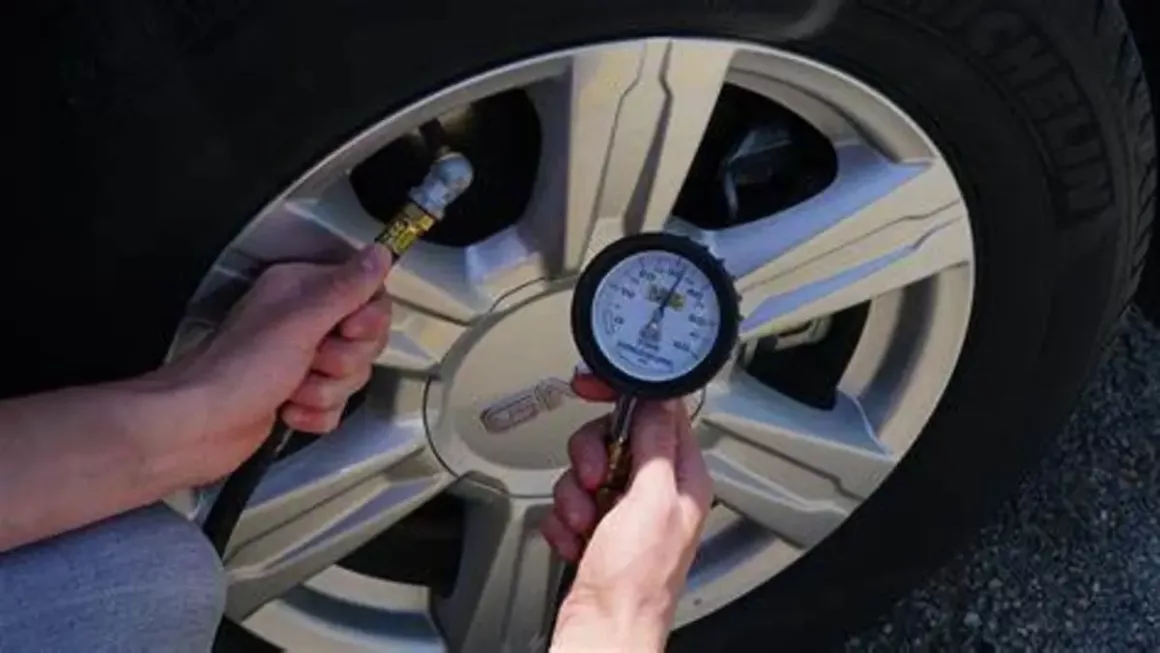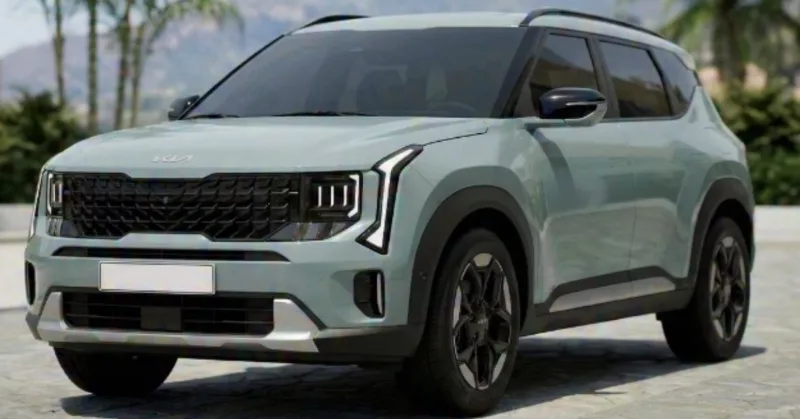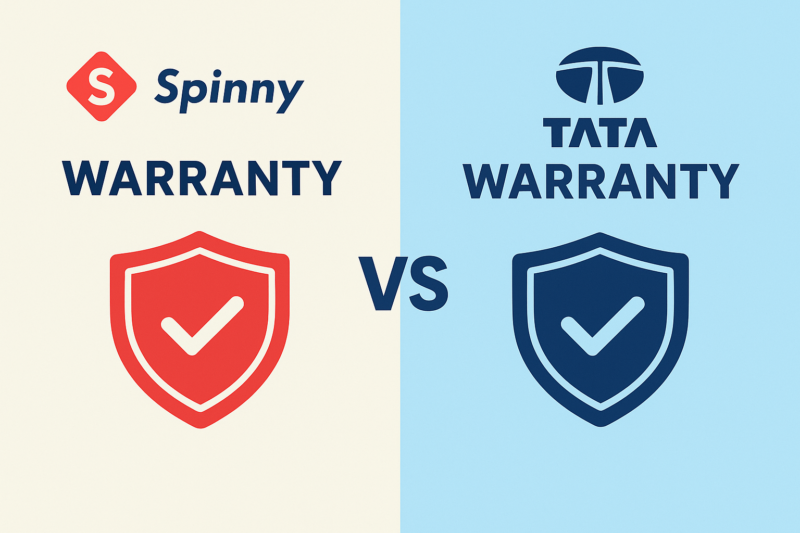Tyres may only be one of the thousands of components that keep the car moving on the road. However, it is safe to say that there is more than just the car that is riding on those tyres. From efficiency to safety, tyres have an impact on nearly every aspect of a car’s performance.
Maintaining the optimum car tyre pressure is crucial to the overall health of the tyres. This blog explores how you can determine the correct tyre pressure for your car, its importance, and also the factors that influence it.
What is Tyre Pressure?
Car tyre pressure is a measurement of how much air is in your car’s tyres. The tyre pressure is measured in pounds per square inch (PSI) or kilopascals (kPa). Every car has its own specification for pressure but they all generally fall in between 32 and 35 PSI. The main benefit of correct tyre pressure is that it improves fuel efficiency, safety while driving, and also the longevity of your car tyres.
Why proper Tyre Pressure matters?
A regular tyre pressure check is important for every car owner as optimal pressure car tyres tend to lose air over time. If your tyres are too low on pressure, they use more fuel and wear out unevenly. If the tyre pressure is too high, they ride bumpy and might blow out. An inappropriately inflated tyre makes it more difficult to control your car on the road. This reduces your ability to accurately steer, corner, accelerate, and brake.
Tyre pressure changes with the weather, as well. In cold weather, tyres lose pressure, affecting how well they grip the road. When it gets warmer, they gain pressure. This is why a frequent tyre pressure check is key for safety and performance. Here are possible problems you may face if you do not maintain proper tyre pressure:
| Underinflated Tyres | Overinflated Tyres |
| Reduced fuel efficiency | Bumpier/harsher ride |
| Uneven tread wear | Increased risk of blowouts |
| Longer braking distances | Faster wear in the centre of the tread |
| Reduced steering responsiveness | Negatively impacts driving comfort, directional stability, and vehicle handling |
Recommended Tyre Pressure
The recommended car tyre pressure is shown on all cars either on the sticker on the driver’s side door or in the car owner’s manual. The vehicle manufacturer sets this pressure and is the most suitable PSI for your car’s tyres. Following this recommendation is the key to avoid performance and safety issues.
Most cars need tyre pressure between 32-36 PSI. Here is a recommended tyre pressure for famous car brands and models:
| Maruti Suzuki | ||
| Model | Tyre Pressure Front Wheels | Tyre Pressure Rear Wheels |
| Alto 800 | 30 PSI | 30 PSI |
| Celerio | 36 PSI | 33 PSI |
| WagonR | 33 PSI | 33 PSI |
| Swift | 29-32 PSI | 29 PSI |
| Ignis | 36 PSI | 32 PSI |
| Baleno | 29-32 PSI | 29 PSI |
| Dzire | 29-32 PSI | 29-32 PSI |
| Ciaz | 29-32 PSI | 29 PSI |
| S-Presso | 33-36 PSI | 32-33 PSI |
| S-Cross | 33-36 PSI | 33-36 PSI |
| Vitara Brezza | 33 PSI | 33 PSI |
| Ertiga | 30-35 PSI | 30-35 PSI |
| XL-6 | 29 PSI | 29 PSI |
| Eeco | 26 PSI | 33 PSI |
| Hyundai | ||
| Model | Tyre Pressure Front Wheels | Tyre Pressure Rear Wheels |
| Santro | 35 PSI | 35 PSI |
| Grand i10 NIOS | 33 PSI | 33 PSI |
| i20 | 30-32 PSI | 30-32 PSI |
| Aura | 35 PSI | 33 PSI |
| Verna | 33 PSI | 33 PSI |
| Elantra | 33 PSI | 33 PSI |
| Venue | 33-36 PSI | 33-38 PSI |
| Creta | 33 PSI | 35 PSI |
| Alcazar | 33-35 PSI | 33-35 PSI |
| Tucson | 33 PSI | 33 PSI |
| Kona | 36 PSI | 36 PSI |
| Tata | ||
| Model | Tyre Pressure Front Wheels | Tyre Pressure Rear Wheels |
| Tiago | 33 PSI | 30 PSI |
| Altroz | 32 PSI | 32 PSI |
| Tigor | 30-35 PSI | 30 PSI |
| Punch | 32 PSI | 32 PSI |
| Safari | 25-30 PSI | 25-30 PSI |
| Harrier | 33 PSI | 33 PSI |
| Nexon | 32 PSI | 32 PSI |
| Mahindra | ||
| Model | Tyre Pressure Front Wheels | Tyre Pressure Rear Wheels |
| XUV700 | 33-35 PSI | 33-35 PSI |
| XUV300 | 33-34 PSI | 33-34 PSI |
| XUV500 | 30-32 PSI | 30-32 PSI |
| Thar | 30-35 PSI | 30-35 PSI |
| Alturas G4 | 34 PSI | 34 PSI |
| Scorpio | 35-40 PSI | 35-40 PSI |
| Bolero | 32-35 PSI | 32-35 PSI |
| Bolero Neo | 32-35 PSI | 32-35 PSI |
| Marazzo | 35 PSI | 35 PSI |
| KUV100 | 33-34 PSI | 33-34 PSI |
| Honda | ||
| Model | Tyre Pressure Front Wheels | Tyre Pressure Rear Wheels |
| Amaze | 28-30 PSI | 28-30 PSI |
| City 5th Gen | 30-35 PSI | 30-35 PSI |
| City 4th Gen | 30-35 PSI | 30-35 PSI |
| WR-V | 32-35 PSI | 30-32 PSI |
| Jazz | 33 PSI | 33 PSI |
| Renault | ||
| Model | Tyre Pressure Front Wheels | Tyre Pressure Rear Wheels |
| Kiger | 30-35 PSI | 30-35 PSI |
| Triber | 33-34 PSI | 33-34 PSI |
| Kwid | 30-32 PSI | 30-32 PSI |
| Duster | 35 PSI | 35 PSI |
| Nissan | ||
| Model | Tyre Pressure Front Wheels | Tyre Pressure Rear Wheels |
| Magnite | 30-35 PSI | 30-35 PSI |
| Kicks | 33-34 PSI | 33-34 PSI |
| Toyota | ||
| Model | Tyre Pressure Front Wheels | Tyre Pressure Rear Wheels |
| Glanza | 33-34 PSI | 33-34 PSI |
| Urban Cruiser | 33 PSI | 33 PSI |
| Innova Crysta | 32-36 PSI | 32-36 PSI |
| Fortuner | 30-35 PSI | 30-35 PSI |
How to check Tyre Pressure?
Incorrect tyre pressure places tremendous strain on the engine, which has a direct effect on car mileage. Ensuring a periodic tyre pressure check helps you maintain your car tyres in optimum condition. Here is how you can check tyre pressure:
Use tyre pressure gauge

You will need an air pressure gauge to conduct an accurate tyre pressure check. The recommended pressure for your car tyres can be found in your car’s manual. Use a tyre pressure monitoring gauge to keep your tyres at the right air pressure levels.
Remember that there are different types of gauges, like dial, stick, and digital. Next, inflate your tyres with a portable inflator or at a tyre shop. Always check the pressure again after inflating.
Checking tyre air pressure without a gauge
If you don’t have a gauge and your car doesn’t have a built-in system, you can still check the pressure physically:
- Feel the tyres with your foot. If they’re firm, the pressure is likely normal. But if they’re soft, they’re underinflated.
- If your car feels bumpy or unstable, check the tyre pressure. This could be a sign of high pressure.
Understanding Tyre Pressure Gauges
Tyre pressure gauges measure the air pressure inside a car’s tyres. There are two main types: digital and standard. Digital gauges show readings that are correct to the decimal, making them a favourite among drivers. Standard gauges use a sliding bar to show pressure.
Although checking tyre pressure without a gauge can give you an idea of whether the tyre is underinflated or overinflated, it is not recommended. Tyre pressure gauges give you accurate results by simply fastening it to the valve stem of the tyre.
Digital gauges are the most accurate. Bourdon tube and diaphragm gauges are also precise but less user-friendly than digital ones. It’s crucial to pick a gauge that gives consistent and reliable readings.
When to check Tyre Pressure?
Tyre bursting has been the cause of 35–40% of accidents in India alone within the last five years. One of the most frequent causes of accidents is tyre blowouts that occur because of high tyre pressure.
This shows that we often overlook the importance of car tyre pressure. It is recommended to check the pressure in your car tyres at least once in 10 days, even if it looks fine. The best time is when the tyres are cold, meaning the car has been parked for at least three hours or driven less than 1 mile.
Regular checks, especially before long drives, help keep tyres inflated at the right pressure and running well. In winter, it is vital to check more often because cold air can lower pressure by up to five PSI.
Common Tyre Pressure issues and their solutions
Many drivers encounter common car tyre pressure problems. Here’s a breakdown of the most frequent issues and how to address them:
- Underinflated tyres: Underinflated tyres make your car use more fuel, wear out faster, and even blow out. To fix this, use an air compressor to add air until they’re at the right pressure.
- Overinflated tyres: Overinflated tyres can make your ride bumpier, reduce traction, and wear out the centre of the tread. If tyre pressure is high, use a tyre pressure gauge to let air out.
- Seasonal Temperature Changes: Colder weather can make tyres deflate, while hot weather can make them inflate. Tyre inflation services can help keep your tyres safe by adjusting for these changes.
- Worn or Damaged tyres: Problems with the wheel or rim can cause low pressure on your old and worn tyres. Get your wheel straightened or rim repaired to improve your tyre’s performance and save fuel.
Effect of Temperature on Tyre Pressure
Cold weather causes tyre pressure to decrease, while hot weather makes it rise. What this means for you as a car owner is that you will need to frequently pump air into your car tyres if you live somewhere in the cold. If the weather is hot where you live, you will need to frequently release air from your car tyres to maintain appropriate pressure levels.
Here is the common effect of temperature on car tyre pressure:
| Temperature Change | tyre Pressure Change |
| 1°C Decrease | 0.19 PSI Decrease |
| 20°C Decrease (27°C to 7°C) | 3.8 PSI Decrease |
| 5 Minutes of Driving | 1 PSI Increase (up to 4-5 PSI) |
| Sun Exposure on Black tyres | Up to 15% Pressure Increase |
| TPMS Variation | Up to 10 PSI |
The Role of Tyre Pressure Monitoring Systems (TPMS)

Modern cars often come with Tyre Pressure Monitoring Systems (TPMS). This technology notifies you if your tyres are too low on pressure. It checks each wheel’s pressure and lights up a dashboard warning if it is off the mark.
There are two kinds of TPMS: indirect and direct. Indirect TPMS is reasonably priced and gives exact pressure readings and can check temperature, too. Direct TPMS is pricier but offers more accurate data and easier setup after tyre changes.
Signs of Incorrect Tyre Pressure
How do you know if your tyre pressure is incorrect? Here are some signs to watch out for:
- Uneven tyre wear: If your tyres wear out more on the edges or in the centre, it’s a sign of under or over-inflation.
- Reduced fuel efficiency: A sudden drop in your car’s fuel efficiency might mean your tyres are underinflated.
- Poor handling: If your car feels sluggish or doesn’t handle as well as usual, check your tyre pressure.
- Frequent tyre deflation: If you’re constantly losing tyre pressure, it might indicate a slow leak or tyre damage.
Impact of Load and Weight on Tyre Pressure
Your vehicle’s load and weight greatly affect the tyre pressure. When your car is full of passengers or cargo, the tyres need more air. This is to handle the extra weight. It’s harder to pump up the tyres because of this extra air. To find the right pressure, check your owner’s manual or the tyre sticker. Not adjusting the pressure can harm your car’s handling and wear down the tyres.
Summary
Keeping your tyre pressure right is key for your car’s safety, how well it runs, and how much fuel it uses. Check your tyre pressure often, use the correct gauge, and adjust it as the maker says. By following these tips, you’ll keep your car safe, running well, and using less fuel. Regular checks and the right pressure can stop accidents, make your car run better, and also last longer.
FAQ’s
Q. Where can I find the recommended tyre pressure for my vehicle?
You can find the recommended car tyre pressure in your owner’s manual. It’s also on the tyre information sticker, often on the driver’s side door jamb.
Q. How do I check my tyre pressure?
First, make sure your tyres are cold. Then, remove the valve stem cap. Place a tyre pressure gauge on the valve stem to get a reading. Compare it to the recommended PSI and adjust as needed.
Q. What types of tyre pressure gauges are available?
There are digital and standard gauges. Digital gauges show the pressure with digital readings. Standard gauges use a sliding bar.
Q. How often should I check my tyre pressure?
Check your tyre pressure at least once a month. Do it even if your tyres look fine. Also, check before long-distance trips.
Q. What are the common tyre pressure issues, and how do I fix them?
If your tyres are underinflated, add air until they reach the right PSI. For overinflated tyres, briefly press the valve stem to release air until it’s correct.



